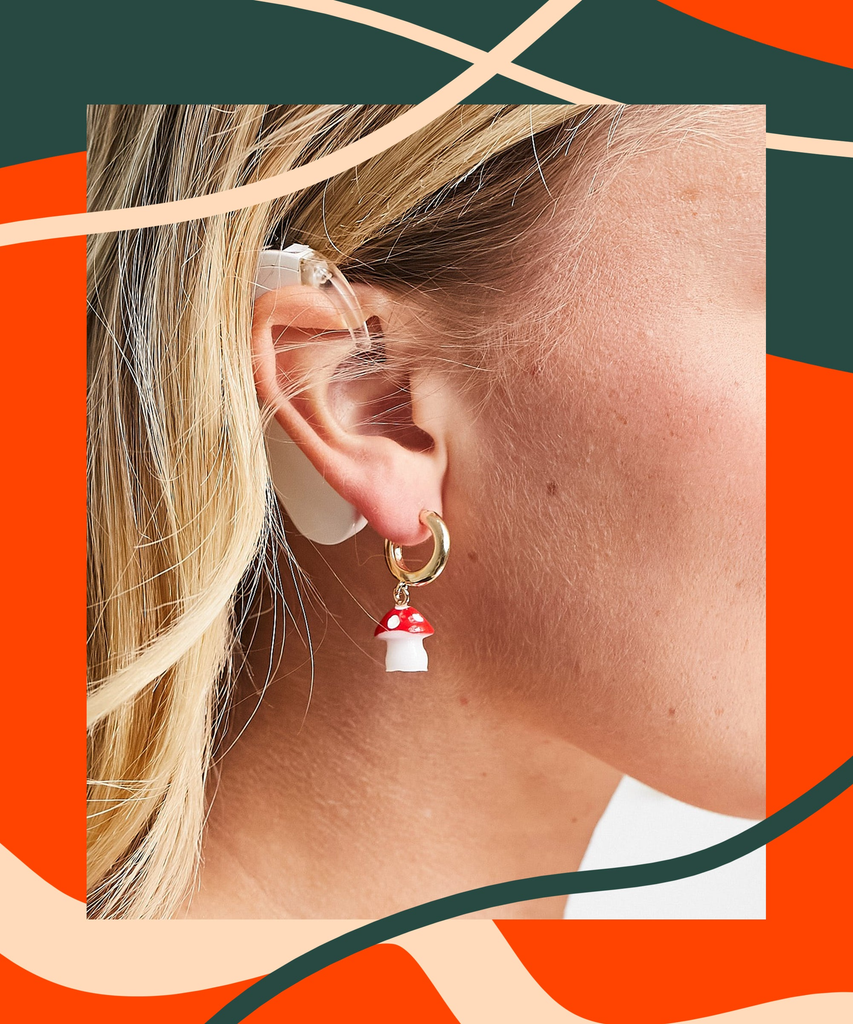
This week, British fashion retailer ASOS quietly introduced a new model to its roster, Natasha Ghouri, whose cochlear implant — a surgically implanted hearing device for people who are deaf or hard-of-hearing — was as much on view in the brand’s e-commerce photos as the mushroom-shaped hoop earring she was modelling. Naturally, the responses on Twitter were overwhelmingly positive.
“Definitely not crying because of ASOS using an earring model with a hearing aid,” tweeted Asia Smith. “It’s so refreshing to see this kind of representation for people like me.” Smith’s tweet now has over 32,000 likes and more than 1,000 retweets. Another user, Samina Sheikh, wrote, “This is fantastic to see… My daughter is a cochlear implant-user, [who is] also deaf from birth. This is so inspiring, well done, ASOS,” while another, Georgia May, wrote, “This hits so deep! We need more models [who are deaf or hard-of-hearing]. We need more real-life models. It isn’t something to hide. It makes people with hearing aids, like myself, feel so good.”
“Assistive technology is normal, and it’s great to see it in the zeitgeist,” Stephanie Thomas, of disability fashion styling platform Cur8able, tells Refinery29. Howard A. Rosenblum, the CEO of the National Association of the Deaf, too, thinks normalising the use of models who are deaf or hard-of-hearing in campaigns is one of the keys to destigmatising it. “When we, deaf and hard-of-hearing people, see other deaf and hard-of-hearing people out in the mainstream, we feel seen,” he says. “Such representations celebrate our ‘differences’ which help others realise that we’re not so different.”
Well done @ASOS for their positive decision to include Natasha, a model with a cochlear implant, on their website. We still have a long way to go but great to see such refreshing & empowering representation & embracing a positive inclusion agenda https://t.co/VpEQlfp5Tb @Femail
— Richard Kramer (@RichardKSense) April 15, 2021
As Richard Kramer, the chief executive of Sense, a U.K.-based charity for people with complex disabilities (including people who are deaf-blind) pointed out in a tweet, this is a meaningful step: “We still have a long way to go but [it’s] great to see such refreshing and empowering representation and [brands] embracing a positive inclusion agenda.” He’s right. As we saw when artist Chella Man, in partnership with fashion brand Private Policy, launched an ear jewellery collection, designed to celebrate the beauty within the deaf and hard-of-hearing communities, one collection can make a significant impact. (50% of the proceeds from the jewelry items went to the Deaf Queer Resource Center, the non-profit organisation dedicated to deaf, queer people, and the capsule collection was covered by major outlets like Vogue, HypeBae, and The Cut.) Given the reach that ASOS has — the company recently purchased Topshop, reported 24.9 million customers in the six months ending in February 2021, and has 11.4 million Instagram followers — this one could be even greater.
“Biggest love to ASOS for welcoming me in and breaking boundaries as this will really help and inspire people out there,” wrote Ghouri in a post on her Instagram. If the scale of responses is any indication, it already has.
Refinery29 reached out to ASOS, but the brand was not available for comment at this time.
Like what you see? How about some more R29 goodness, right here?
The Importance Of Nike’s First Hands-Free Sneaker